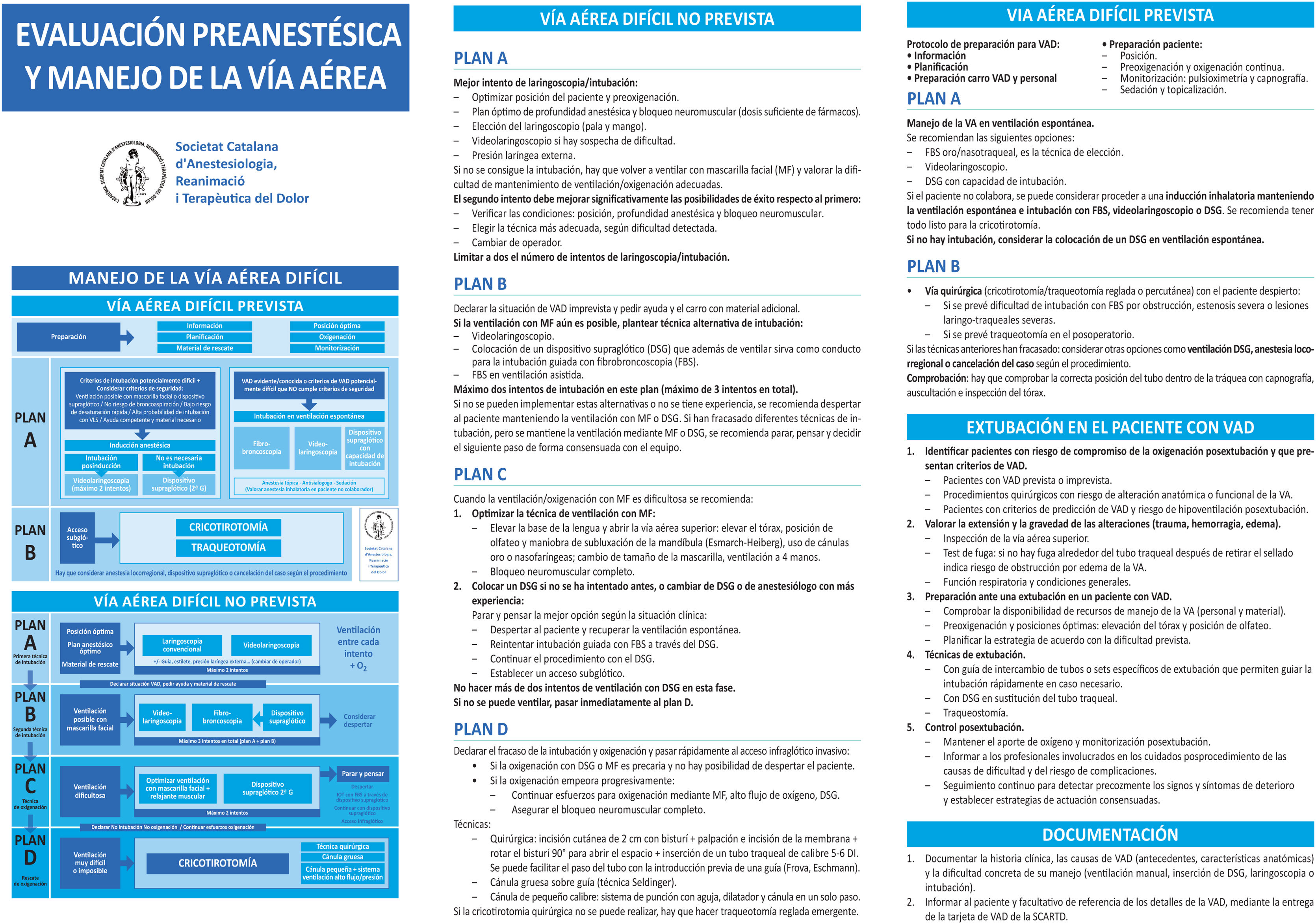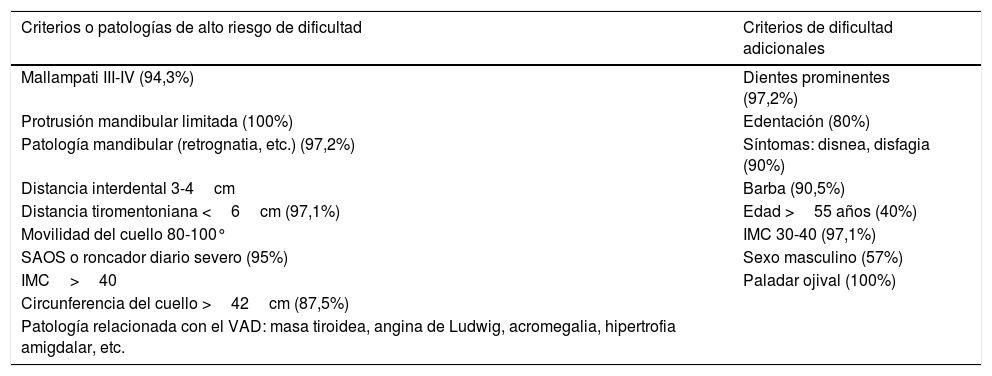La Sección de Vía Aérea de la Sociedad Catalana de Anestesiología, Reanimación y Terapéutica del Dolor (SCARTD) presenta la actualización de las recomendaciones para la evaluación y manejo de la vía aérea difícil con el fin de incorporar los avances técnicos y los cambios observados en la práctica clínica desde la publicación de la primera edición en 2008.
La metodología elegida fue la adaptación de 5 guías internacionales recientemente publicadas, cuyo contenido fue previamente analizado y comparado de forma estructurada, y el consenso de expertos de los 19 centros participantes.
El documento final fue sometido a la valoración de los miembros de la SCARTD y a la revisión por parte de 11 expertos independientes. Estas recomendaciones están pues sustentadas en la evidencia científica actualmente disponible y en un amplio acuerdo de los profesionales de su ámbito de aplicación.
En esta edición se amplía la definición de vía aérea difícil, abarcando todas las técnicas de manejo, y se hace mayor hincapié en la valoración de la vía aérea y en la clasificación en 3 categorías según el potencial grado de dificultad y las consideraciones de seguridad adicionales, que guiarán la planificación de la estrategia a seguir. La preparación previa al manejo de la vía aérea, no solo relativa al paciente y al material, sino también a la comunicación e interacción entre todos los agentes implicados, ocupa un lugar destacado en todos los escenarios incluidos en el presente documento. El texto refleja el aumento progresivo del uso de los videolaringoscopios y de los dispositivos de segunda generación en nuestro entorno y promueve tanto su uso electivo como el uso precoz en la vía aérea no prevista. También recoge la creciente utilización de la ecografía como herramienta de apoyo en la exploración y toma de decisiones.
Se han abordado nuevos escenarios como el riesgo de broncoaspiración y la extubación considerada difícil. Finalmente, se trazan las líneas maestras de los programas de entrenamiento y formación continuada en vía aérea necesarios para garantizar la implementación efectiva y segura de las recomendaciones.
The Airway Division of the Catalan Society of Anaesthesiology, Intensive Care and Pain Management (SCARTD) presents its latest guidelines for the evaluation and management of the difficult airway. This update includes the technical advances and changes observed in clinical practice since publication of the first edition of the guidelines in 2008.
The recommendations were defined by a consensus of experts from the 19 participating hospitals, and were adapted from 5 recently published international guidelines following an in-depth analysis and systematic comparison of their recommendations.
The final document was sent to the members of SCARTD for evaluation, and was reviewed by 11 independent experts. The recommendations, therefore, are supported by the latest scientific evidence and endorsed by professionals in the field.
This edition develops the definition of the difficult airway, including all airway management techniques, and places emphasis on evaluating and classifying the airway into 3 categories according to the anticipated degree of difficulty and additional safety considerations in order to plan the management strategy. Pre-management planning, in terms of preparing patients and resources and optimising communication and interaction between all professionals involved, plays a pivotal role in all the scenarios addressed.
The guidelines reflect the increased presence of video laryngoscopes and second-generation devices in our setting, and promotes their routine use in intubation and their prompt use in cases of unanticipated difficult airway. They also address the increased use of ultrasound imaging as an aid to evaluation and decision-making.
New scenarios have also been included, such as the risk of bronchoaspiration and difficult extubation Finally, the document outlines the training and continuing professional development programmes required to guarantee effective and safe implementation of the guidelines.













